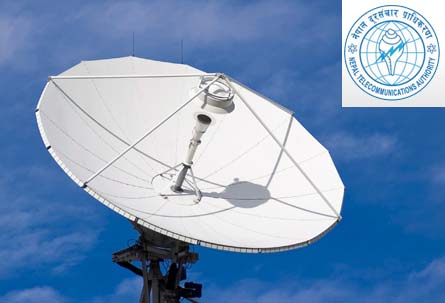NEA focusing on improving power distribution system
Kathmandu, December 19
After overcoming challenges related to supply side constraints, Nepal Electricity Authority (NEA) has finally moved to improving the distribution system in Kathmandu Valley and other parts of the country.
The power utility that was stuck with minimising the prolonged load-shedding had not paid due attention to upgrading the distribution system in the past. Hence, it started facing challenges with the distribution system. Low capacity and old system are the major barriers for reliability in power supply, to increase demand as well as control technical losses.
Against this backdrop, the Asian Development Bank (ADB) is supporting NEA to upgrade the distribution substations and grid substations. Grid substations are being built to increase transmission capacity, reduce transmission losses and stabilise voltage.
In Kathmandu Valley, three 132/11 kV distribution substations — each of 90 MVA capacity — are going to be added in three different places in Mulpani, Chapagaun and Futung for reliable power supply.
Capacity constraints of the distribution substations were witnessed during the trade disruptions in 2015. Back then, NEA was forced to resort to load-shedding despite availability of power because the distribution system could not handle the load and as a result, transformers, feeders and cables were overloaded.
Just before this, NEA with assistance worth $115 million from ADB, had constructed a new grid substation at Chapali and upgraded grid substation at Matatirtha, which has opened the window to bring more power for distribution in the Valley under the Electricity Transmission and Supply Improvement Project and Energy Access and Efficiency Improvement Project.
Lack of adequate grid substations and low capacity are considered as the major bottlenecks to bring more power from generation plants via national grid to Kathmandu Valley. Along with upgrading the distribution system, NEA in the next step will move to distribution automation, according to NEA officials.
Two other grid substations, 220/132 kV Lapsifedi substation of 160 MVA capacity and 132/11 kV Changunarayan substation of 45 MVA are going to be developed by 2021 as the procurement process has already been completed, as per Pushkar Manandhar, energy officer at ADB, Nepal Mission.
Similarly, ADB has provided support to NEA to double the single circuit 132 kV transmission line from Butwal to Kohalpur and Kohalpur to Mahendranagar, a total of 404-km transmission line. It has also built three new 132/33/11 kV substations at Kusum, Bhuregaun and Pahalmanpur. ADB has also helped in augmenting seven existing substations at Butwal, Shivapur, Lamahi, Kohalpur, Lamki, Attariya and Lalpur, thus contributing to reliable and quality power supply in the region.
In the Kohalpur-Mahendranagar section, the Norwegian government has co-financed the ADB project with grant assistance worth $9.4 million. Altogether, five new grid substations and augmentation of 11 grid substations have been completed in the last seven years. Similarly, eight new distribution substations and augmentation of 18 distribution substations have been completed in the last seven years under the Electricity Transmission and Supply Improvement Project and Energy Access and Efficiency Improvement Project of the ADB.
ADB has developed these substations and installed another 132 kV transmission line in transmission highway of western Nepal on turnkey basis. In these projects the development partners worked closely with NEA to curb unnecessary delay in implementation of the project.
Distribution substations and grid substations developed under the project have enhanced the livelihoods by ensuring reliability and quality of power supply and also helped minimise transmission and distribution losses. It has helped the power utility to maximise revenue as it has paved the way to increase the consumption of power.
The Asian Development Bank has developed the distribution substations eyeing the places where there is a prospect of industrialisation in the future and also in urban and urbanising areas. Manandahar from ADB said that the transmission and distribution infrastructure will cater to the increased demand of electricity for next 15 years.






